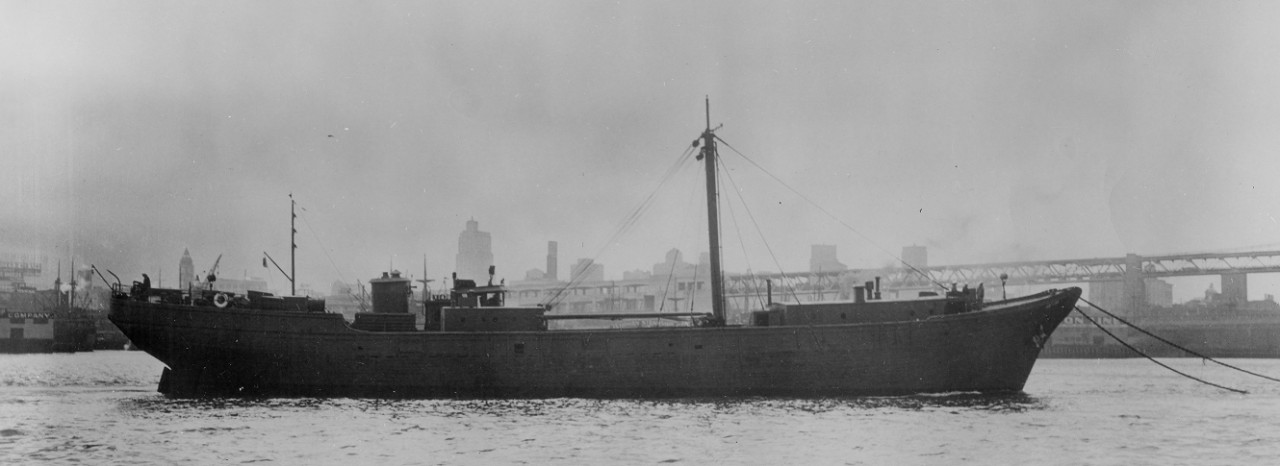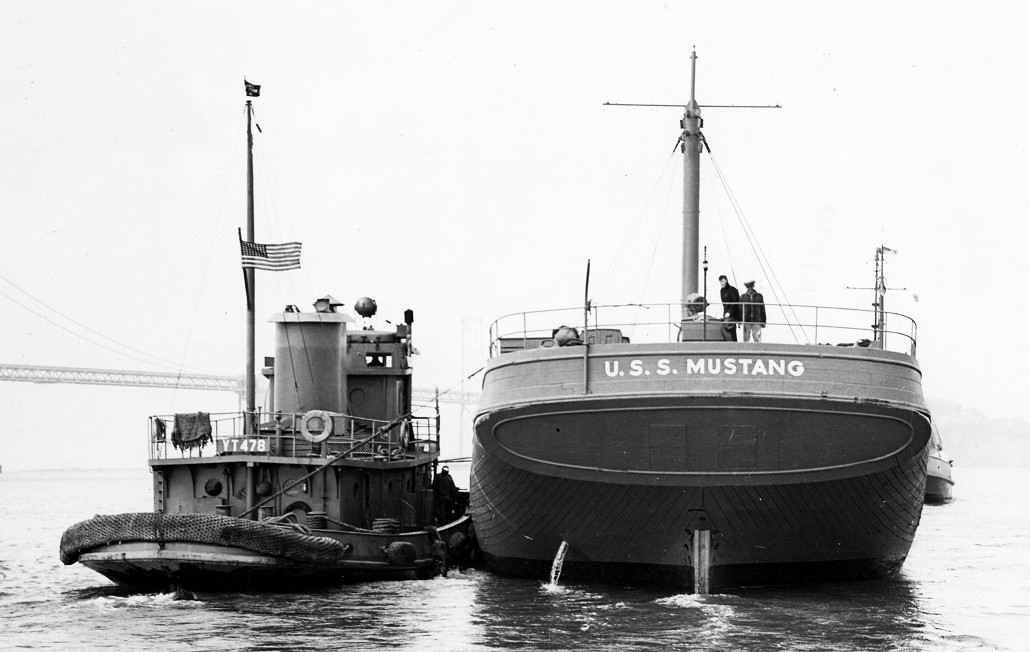Mustang II (IX-155)
1944–1946
While the first Mustang retained the name she carried at the time of her acquisition by the Navy during the World War I, the second was named for the small wild or semi-wild horse, descendants of the animals brought by the Spanish to what is now the southwestern U.S.
II
(IX‑155: tonnage 566 (gross register), 496 (net); length 170'4"; beam 37'6"; depth of hold 12'8"; complement 9)
The wooden-hulled four‑masted schooner William H. Smith built in 1899 at Port Blakely, Wash., by the famed local shipbuilder H. K. Hall. During the next four decades, she plied the Pacific coast between San Francisco, Calif., and Alaskan ports in the fishing trade. She was acquired by the Navy from the Alaska Salmon Co. of San Francisco on 28 January 1944 and converted for Navy use at Oakland, Calif., by the Pacific Dry Dock & Repair Co. Classified as an auxiliary vessel (unclassified), IX-155, she was renamed Mustang on 6 February 1944.


Following completion of her conversion on 17 April 1944, Mustang was assigned to the Amphibious Training Base at Coronado, Calif. During the remainder of World War II, she provided an afloat training facility at Coronado, for landing craft coxswains to experience bringing their boats alongside.
Declared surplus to Navy needs on 16 May 1946, Mustang was stricken from the Naval Register on 5 June 1946, and she was transferred to the Maritime Commission for disposal. Subsequently, she was sold to Arthur Banks of Los Angeles, California. The only individual who would answer to that name in the 1940 census in Los Angeles was an Arthur G. Banks, a hardworking 35-year old African-American man who listed his occupation as “importer” of “foreign merchandise.”
Updated, Robert J. Cressman
10 August 2022


